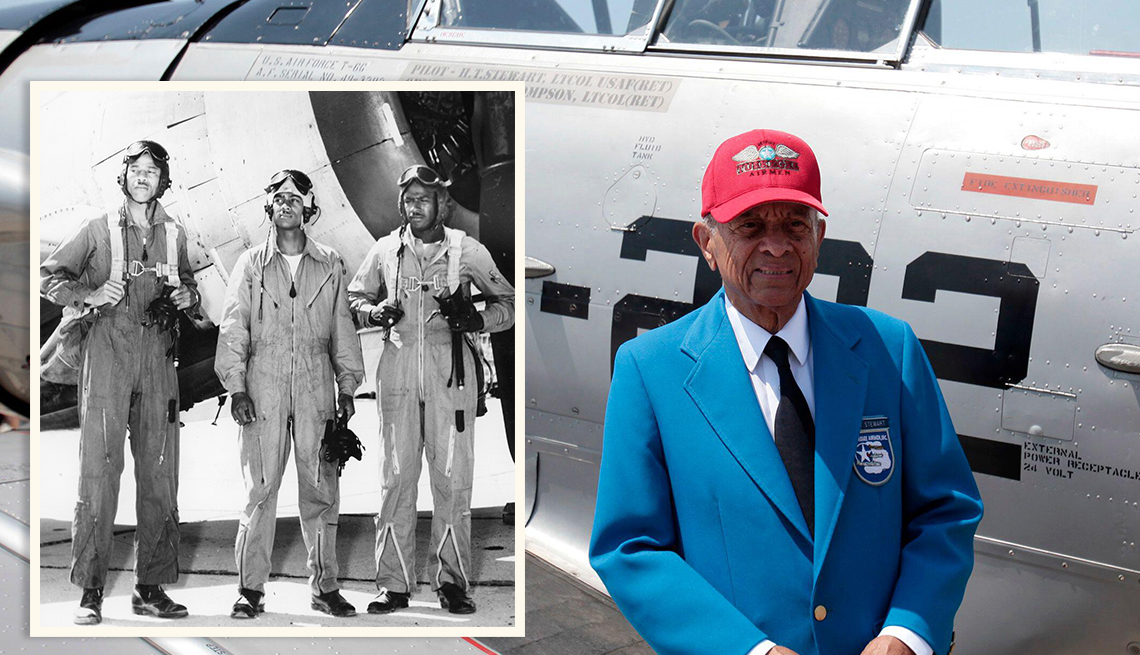Staying Fit
“I was coming home from Sunday school and saw a bunch of neighbors outside my parents’ house,” says Harry Stewart, who turned 97 on July 4. “They were discussing the raid [that day] on Pearl Harbor.” Someone said, ‘We’ll deal with the enemy in no time. We’ll have them blown out of the ocean in a week.’”
That proved optimistic. Four long years later, Stewart was in a cockpit above Nazi Germany, fighting for his life. Today, he is one of the last surviving Tuskegee Airmen, the legendary African American outfit that helped defeat Hitler’s Luftwaffe.


AARP Membership— $12 for your first year when you sign up for Automatic Renewal
Get instant access to members-only products and hundreds of discounts, a free second membership, and a subscription to AARP the Magazine.
Stewart had dreamed of flying as a young boy, but that seemed a remote possibility in segregated America. So when war broke out, he seized his chance, volunteering for the U.S. Army Air Corps. Forced to sit in a segregated railcar on his way to basic training, he gained his wings in June 1944 — before he could drive a car.
In January 1945, Stewart joined the “Red Tails,” known to German pilots as the “Schwartze Vogelmenschen” — Black birdmen — part of the 332nd Fighter Group. On April 1, 1945, Easter Sunday, on a mission to Austria, Stewart more than proved he had the right stuff.
“I downed two planes, and the third one crashed while we were in a dogfight. And I was given credit for it,” he says, which earned him the Distinguished Flying Cross. In all, he completed 43 missions. “Every [one] had a certain amount of anxiety to it.”
In 1950, having married the sister of one of his fellow Tuskegee Airmen, Stewart received an honorable discharge. He wanted to become a commercial airline pilot but was denied the chance because of his race. Instead, he got an engineering degree from New York University and then forged a highly successful career, eventually becoming vice president of ANR Pipeline Company. He retired from the Air Force Reserve as a lieutenant colonel. In 2007, he received the Congressional Gold Medal.
Two years ago, at 95, Stewart took to the skies again in a modified P-51 Mustang, the aircraft he flew during World War II. “I did a slow roll and a loop,” he says. “It was quite a thrill.”
Stewart’s life was profoundly changed by the surprise Japanese attack 80 years ago. And while racism at home was still endemic, he and his fellow Tuskegee Airmen gave their all for their country: “I felt great patriotism … as if I had part ownership in the country.”
Alex Kershaw is a best-selling author of several books about World War II, including The Liberator, which became a Netflix miniseries in 2020.

































































